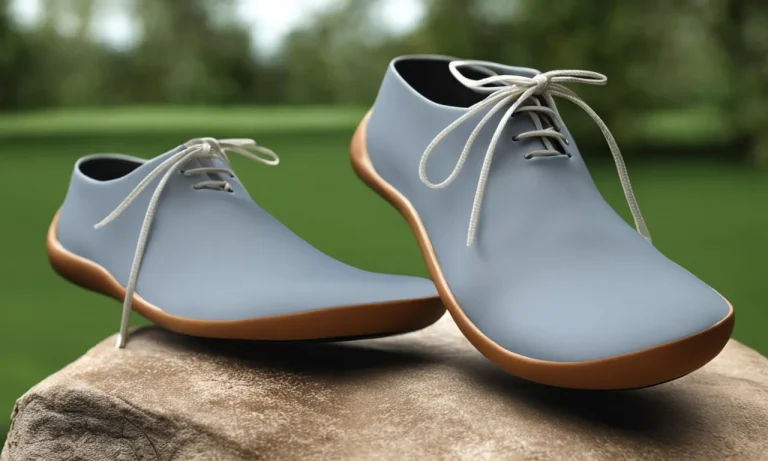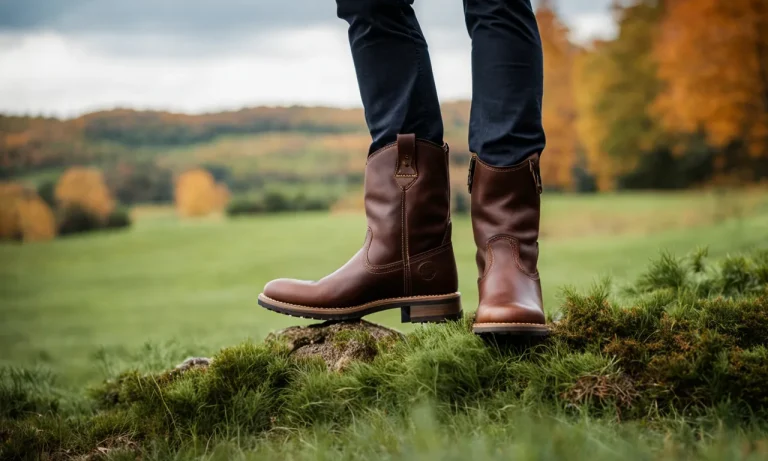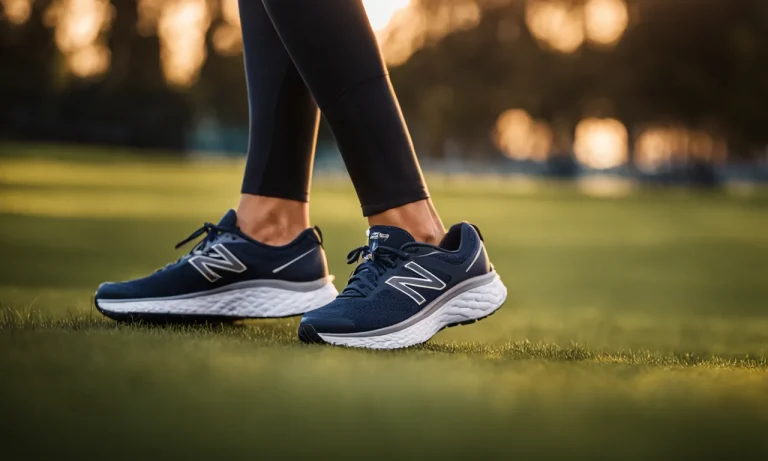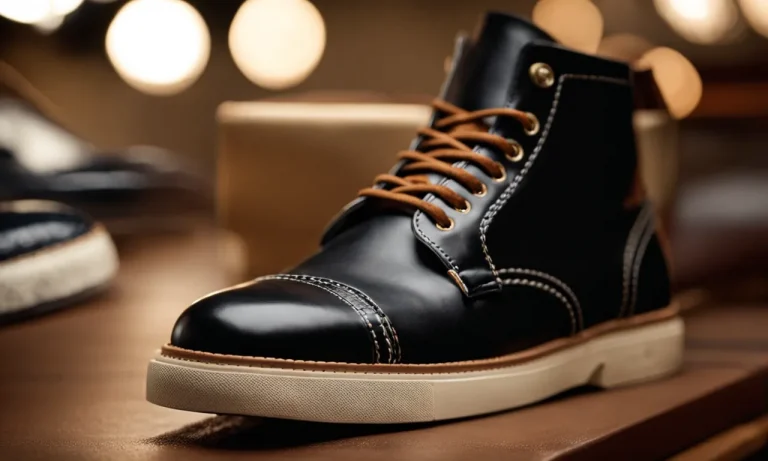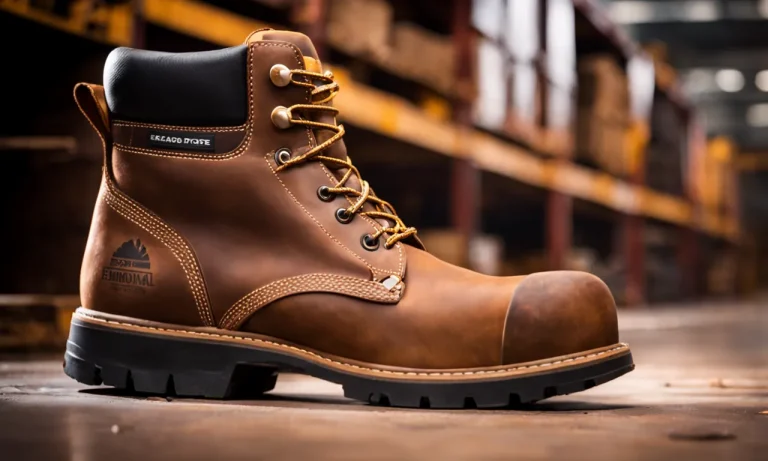Do rain boots and socks go together? This is a question many of us ask when the rainy season arrives. If you’re in a hurry, the quick answer is: yes, you should wear socks with rain boots for comfort and hygiene.
In this comprehensive guide, we’ll cover everything you need to know about pairing socks with your rain boots. We’ll discuss the pros and cons of going sockless, the best types of socks to wear, how to avoid common problems like blisters and smelly boots, and tips for keeping your feet warm and dry.
The Benefits of Wearing Socks with Rain Boots
When it comes to wearing rain boots, some people may wonder if it is necessary to wear socks with them. While it may seem like an extra step, wearing socks with rain boots actually offers several benefits that can enhance your overall comfort and protect your feet.
Absorbs Sweat and Odor
Wearing socks with rain boots helps to absorb sweat and prevent unpleasant odor. As you walk or engage in activities, your feet naturally perspire, and this moisture can get trapped inside the boots. By wearing socks, the fabric absorbs the sweat, keeping your feet drier and reducing the chance of foul odors developing.
Prevents Chafing and Blisters
Another benefit of wearing socks with rain boots is that they act as a barrier between your skin and the rubber material of the boots. This helps to prevent chafing and blisters that can occur when your skin rubs against the boots directly.
Socks provide a layer of cushioning and reduce friction, allowing for a more comfortable experience.
Keeps Feet Warm
During colder weather or when walking through puddles, wearing socks with rain boots helps to keep your feet warm. The additional layer of insulation provided by the socks helps to retain heat and prevent your feet from getting cold.
This is especially beneficial if you plan to spend an extended amount of time outdoors in wet conditions.
Provides Cushioning and Comfort
Socks add an extra layer of cushioning and comfort when wearing rain boots. They help to distribute pressure evenly across your feet, reducing the strain on specific areas. This can be particularly beneficial if you are walking or standing for long periods of time.
Additionally, socks can provide extra support to the arches of your feet, enhancing overall comfort.
Considerations for Going Sockless
Can Cause Chafing and Blisters
While it may seem tempting to go sockless when wearing rain boots, it’s important to consider the potential consequences. Going sockless can lead to chafing and blisters, especially if the boots are not properly fitted.
Without the barrier of socks, the friction between your feet and the boots can cause discomfort and irritation. It’s essential to prioritize your comfort and avoid potential foot problems.
Leads to Odor Buildup
Another factor to consider when deciding whether to wear socks with rain boots is the issue of odor buildup. Without socks to absorb moisture, your feet are more likely to sweat inside the boots. This moisture, combined with the lack of ventilation, creates an environment that is conducive to the growth of bacteria.
As a result, you may experience unpleasant foot odor. Wearing socks can help to absorb sweat and reduce the chances of odor buildup.
Not as Warm
When it comes to insulation, going sockless in rain boots may leave your feet feeling less warm. Socks provide an additional layer of insulation, helping to keep your feet cozy and protected from the cold.
By wearing socks, you can create a barrier that traps heat and keeps your feet comfortable, even in chilly weather conditions. If you’re planning to spend a significant amount of time outdoors in your rain boots, wearing socks can help to keep your feet warm.
Less Cushioning
One of the benefits of wearing socks with rain boots is the added cushioning they provide. Socks act as a buffer between your feet and the boots, offering extra padding and support. This can help to absorb shock and reduce the impact on your feet when walking or standing for long periods.
Without socks, you may miss out on this cushioning effect, which can lead to discomfort and fatigue in your feet.
Choosing the Best Socks for Rain Boots
Material: Wool, Cotton, Synthetic Blends
When it comes to choosing the best socks for rain boots, the material is an important factor to consider. Wool, cotton, and synthetic blends are popular choices for rain boot socks. Wool socks provide excellent insulation and moisture-wicking properties, keeping your feet warm and dry even in wet conditions.
Cotton socks are lightweight and breathable, making them a comfortable option. Synthetic blends, on the other hand, offer a combination of durability and moisture-wicking capabilities.
Thickness: Medium Weight
Opting for medium-weight socks is recommended when wearing rain boots. These socks provide a good balance between insulation and breathability. They are thick enough to keep your feet warm and protected from the cold and wet, while still allowing proper airflow to prevent excessive sweating.
Thick socks may make your feet feel cramped inside the boots, while thin socks may not provide sufficient warmth and cushioning.
Height: Mid-Calf or Knee-High
The height of the socks is another consideration when choosing socks for rain boots. Mid-calf or knee-high socks are ideal for rain boots as they provide coverage and protection for your legs. These lengths help to prevent water from seeping into the boots and keep your legs dry.
Additionally, the longer length socks can also help to prevent chafing and blisters that may occur from the rubbing of the rain boots against your skin.
Snug vs. Loose Fit
When it comes to the fit of the socks, it is generally recommended to opt for a snug fit rather than a loose fit. Snug-fitting socks help to prevent friction and rubbing inside the rain boots, reducing the risk of blisters and discomfort.
However, it is important to ensure that the socks are not too tight, as this can restrict blood circulation and cause discomfort. Finding the right balance between a snug fit and comfort is key.
For more information on choosing the best socks for rain boots, you can visit Outdoor Gear Lab. They provide detailed reviews and recommendations for various types of socks suitable for outdoor activities.
Avoiding Common Foot Problems
When wearing rain boots, it is important to take care of your feet to avoid common foot problems. Here are some tips to help you prevent blisters, chafing, athlete’s foot, odor, wetness, and cold.
Blisters and Chafing
One of the most common foot problems when wearing rain boots is blisters and chafing. The tight fit and moisture inside the boots can cause friction, leading to painful blisters and chafing. To prevent this, make sure to wear socks that are specifically designed for rain boots.
These socks are usually made from moisture-wicking materials that help keep your feet dry and reduce friction. Additionally, consider applying a thin layer of petroleum jelly or anti-chafing balm on areas that are prone to blisters and chafing.
Athlete’s Foot
Athlete’s foot is a fungal infection that thrives in warm, moist environments, making rain boots a perfect breeding ground. To avoid this uncomfortable and itchy condition, always make sure to wear clean and dry socks with your rain boots.
It is also important to allow your rain boots to dry thoroughly between uses to prevent the growth of fungi. If you do develop athlete’s foot, over-the-counter antifungal creams can help treat the infection.
Odor
Wearing rain boots for extended periods can lead to unpleasant foot odor. This is because the moisture trapped inside the boots creates an ideal environment for bacteria to grow, causing the smell. To combat odor, make sure to wear moisture-wicking socks and change them regularly.
You can also sprinkle some baking soda or use odor-absorbing insoles inside your rain boots to help neutralize any unpleasant smells.
Wetness and Cold
While rain boots are designed to keep your feet dry, prolonged exposure to rain or wet conditions can still result in moisture seeping inside. This can leave your feet feeling wet and cold, increasing the risk of discomfort and even frostbite in extreme conditions.
To prevent this, consider wearing waterproof socks or adding an extra layer of insulation by wearing thicker socks. It is also important to choose rain boots that fit properly to ensure a snug and secure fit, preventing water from entering.
By following these tips, you can enjoy wearing your rain boots without worrying about common foot problems. Remember to prioritize your foot health and take the necessary precautions to keep your feet dry, comfortable, and free from any issues.
Tips for Dry, Comfortable Feet
When it comes to wearing rain boots, keeping your feet dry and comfortable is essential. Here are some helpful tips to achieve just that:
Waterproof Socks
One of the best ways to prevent moisture from seeping into your rain boots is by wearing waterproof socks. These socks are specially designed to keep your feet dry even in wet conditions. They are made from materials that repel water, such as neoprene or rubber.
Waterproof socks are a great investment for those who frequently wear rain boots and want to ensure maximum comfort.
Insoles/Inserts
Another option to enhance the comfort of your rain boots is by using insoles or inserts. These can provide additional cushioning and support to prevent discomfort during prolonged wear. Insoles made from moisture-wicking materials can also help to keep your feet dry by absorbing sweat.
Moisture-Wicking Liners
If you prefer to wear regular socks with your rain boots, consider using moisture-wicking liners. These thin liners are designed to be worn under your socks and help to move moisture away from your skin.
They can be particularly useful for people who tend to sweat a lot or for those engaging in activities that involve a lot of movement.
Breathable Sock Fabrics
Choosing the right sock fabric is also important for maintaining dry and comfortable feet. Look for socks made from breathable materials such as cotton or merino wool. These fabrics allow for better air circulation, reducing the chances of sweat build-up and keeping your feet fresher for longer.
Proper Boot Fit
Ensuring that your rain boots fit properly is crucial for both comfort and keeping your feet dry. Ill-fitting boots can cause friction and discomfort, leading to blisters and other foot issues. Make sure to measure your feet accurately and choose boots that provide enough room for your toes to wiggle without being too loose.
Take Breaks to Dry Feet
Even with the best socks and boots, it’s important to take breaks and give your feet a chance to dry. If you’re spending a long time in wet conditions, try to find a dry spot to remove your boots and socks for a few minutes.
This will allow any moisture that has accumulated to evaporate and give your feet a break from the damp environment.
By following these tips, you can ensure that your feet stay dry and comfortable while wearing rain boots. Remember, investing in high-quality socks and taking proper care of your feet will go a long way in enhancing your overall comfort and enjoyment, no matter the weather conditions.
Conclusion
To summarize, wearing socks with your rain boots offers many benefits in terms of comfort, warmth, and foot health. The right socks act as a protective barrier between your feet and the inside of the boots. Sockless boots can lead to chafing, blisters, and odor over time.
Choose socks made of wool, cotton blends, or technical fabrics that wick moisture. Look for medium thickness and a snug fit. Finally, prepare your feet properly before putting on your boots to avoid problems like blisters or athlete’s foot.
With the proper socks and care, your feet will stay happy and healthy on all your rainy day adventures.

